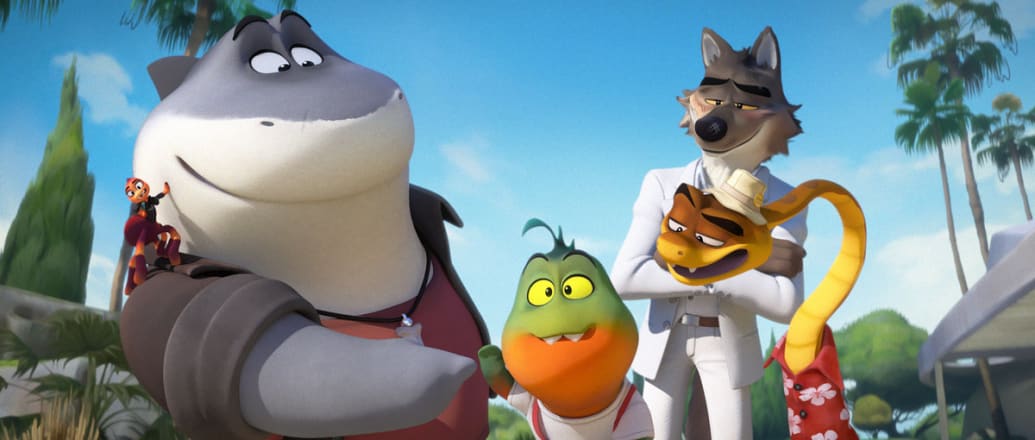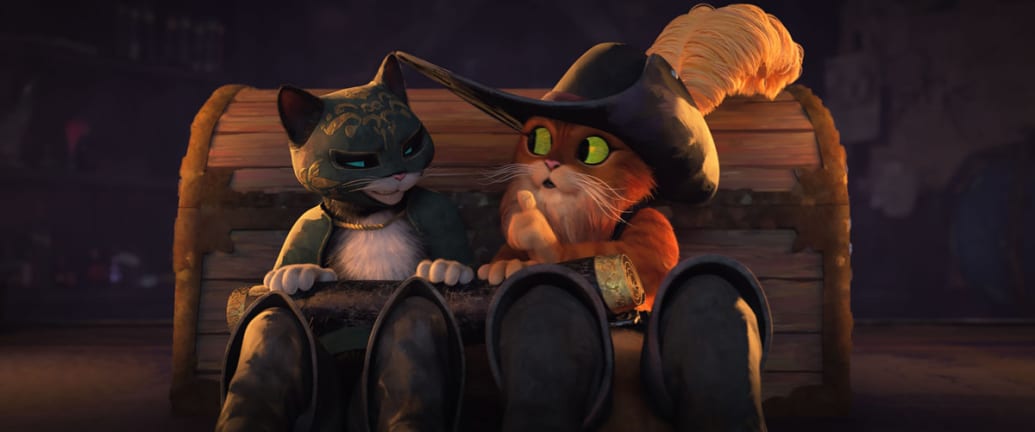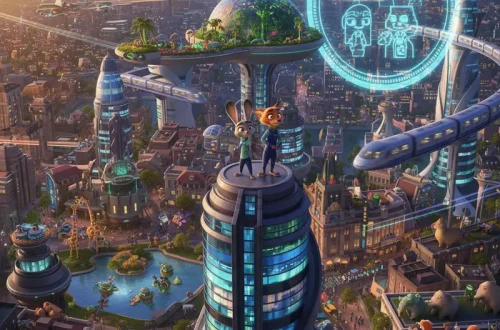
Disney, once the undisputed titan of animated films, has found itself trailing behind arch-nemesis Universal Pictures in the box office race for three consecutive years, and the outlook for a magical turnaround seems bleak. The slump began with Pixar’s “Onward,” which opened to a lackluster $39 million in March 2020, and the trend continued with Walt Disney Animation’s “Strange World,” barely scraping past $25.5 million in its initial 12 days of domestic release. Disney’s theatrically released animated films, grappling with the challenges of COVID, have struggled to amass just over $1 billion globally.
In stark contrast, Universal’s combined theatrical output, driven by Illumination and DreamWorks Animation, has been a juggernaut, raking in $2.06 billion worldwide during the same period. This success is attributed to a string of animated hits like “Trolls: World Tour,” “The Croods: A New Age,” “Spirit Untamed,” “The Boss Baby: Family Business,” “Sing 2,” “The Bad Guys,” and “Minions: The Rise of Gru.” NBC Universal CEO Jeff Shell proudly declared that their animation business is now challenging, if not surpassing, Disney’s.
The recent underperformance of Disney’s “Encanto” ($256 million) in late 2021/early 2022, compared to Universal’s “Sing 2” ($407 million), and Disney/Pixar’s “Lightyear” ($226 million) falling short of both Illumination’s “Minions: The Rise of Gru” ($937 million) and DreamWorks Animation’s “The Bad Guys” ($250 million) has intensified the contrast in box office performance.

What adds to the perplexity is that Disney can’t attribute this deficit to pandemic conditions alone, as every studio faced similar challenges, with families reluctant to return to theaters and the emergence of hybrid theatrical/streaming releases. For instance, Disney’s “Raya and the Last Dragon” grossed under $160 million in early 2021 amid a hybrid release, while Universal and DreamWorks’ “The Croods: A New Era” managed to reach $216 million under similar circumstances. Paramount’s “Paw Patrol” movie even earned $145 million in theaters while being concurrently available on Paramount+.
The blame for Disney’s animation woes has been laid, in part, on former CEO Bob Chapek’s strategy of prioritizing streaming gains over box office revenue. Titles like “Soul,” “Luca,” and “Turning Red” were directly released on Disney+, especially during a period when live-action production was stalled due to the pandemic. This move has been criticized for muddying the Disney brand, leaving consumers unsure of which film will be theatrically released and which will land on Disney+.
While every major studio had to adapt to the challenges posed by the COVID-19 pandemic, with many films being leased or sold to streaming platforms, Disney’s emphasis on streaming might have come at the cost of potential post-theatrical revenue opportunities. As the industry shifts back towards prioritizing the bottom line over streaming subscriptions, Disney’s strategy might be seen as having undercut theatrical and considerable post-theatrical revenue opportunities.

Disney’s focus on streaming has been perceived as a potential factor in diluting its once pristine brand. By shifting several big-screen titles to its streaming service, Disney might have inadvertently altered the audience’s perception of the Pixar logo, previously synonymous with top-tier theatrical animation. Instead, the Disney+ strategy might have trained audiences to anticipate watching these films at home, diminishing the allure of a theatrical experience.
The lack of successful sequels or the launch of new animated franchises further compounds Disney’s animation challenges. While the studio released five Pixar sequels and two Walt Disney animated sequels between 2013 and 2019, it has only produced one sequel since then: “Lightyear,” a “Toy Story” spinoff that fell short at the box office this past summer. This decline in new content could be a consequence of Disney selling nostalgia for its classic IP, which began running thin by 2020.
However, Disney’s struggles aren’t unique, as the animation landscape has seen a shift towards established franchises, brand-specific nostalgia, and marquee characters. No original animated film has surpassed $300 million worldwide since Walt Disney and Pixar’s “Coco” achieved this feat in late 2017.

This dip in Disney’s animation fortunes is reminiscent of the late 1990s when Jeffrey Katzenberg’s DreamWorks Animation entered the scene, challenging Disney’s supremacy. The two studios engaged in a spirited rivalry throughout the 2000s, with DreamWorks offering new franchises like “Shrek,” “Madagascar,” “Kung Fu Panda,” and “How to Train Your Dragon.” Both animation giants claimed market share victories amid a gradually expanding global marketplace.
Disney eventually regained the upper hand, thanks to the success of Pixar originals like “Ratatouille,” “Wall-E,” “Up,” and “Brave.” The studio embraced its roots as a purveyor of female-led fairy tale fantasy adventures, with hits like “Tangled,” “Frozen,” and “Moana,” capturing the imagination of audiences.
The current situation has left many hoping for a renaissance under new leadership at Disney. With Bob Iger back at the helm, there’s an expectation of a renewed emphasis on the theatrical release of Disney’s animated fare, ushering in a return to prominence.

However, the market share victory seems elusive for Disney in the near future. The studio’s major animated releases for the upcoming year are both non-sequel originals: Pixar’s “Elementals” scheduled for June 16, 2023, and Walt Disney’s “Wish” on Nov. 22, 2023. Meanwhile, Universal is doubling down on familiar franchises with “Despicable Me 4,” “The Super Mario Bros. Movie” from Illumination, and “Trolls 3” from DreamWorks Animation.
A representative for Disney defended its animation slate, emphasizing the time required to produce new IP and sequels. The studio cited iconic franchises like “Frozen,” “Cars,” “The Incredibles,” “Toy Story,” “Zootopia,” “Wreck-It Ralph,” and “Finding Dory” as successful new IPs introduced to audiences in theaters. Despite the current challenges, the hope is that Disney’s legacy in animation will be rebuilt under fresh leadership, reclaiming its position as an animation powerhouse.

We bring out some of the most well-known Disney collection, all of which are available at reasonable costs. Visit our link now if you are interested in the Disney collection


Hiccup, Toothless, Astrid, Stoick, Gobber
